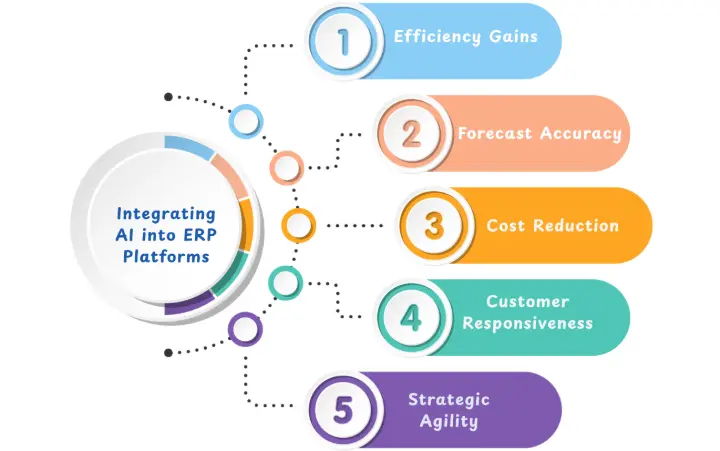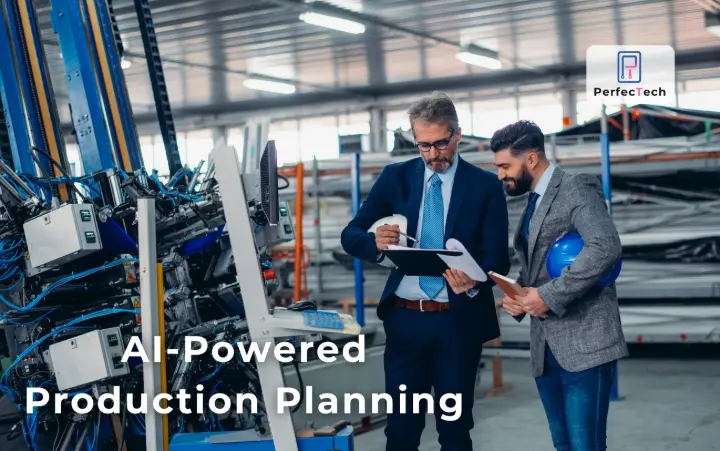Using ERP for Predictive Maintenance & Demand Forecasting
Production planning has evolved far beyond static scheduling and guesswork. In today’s hyper-competitive industrial landscape, decisions must be anticipatory—not reactive. Artificial Intelligence (AI), when embedded within ERP systems, is redefining how manufacturers forecast demand and maintain equipment. It’s not science fiction. It’s the present reality for businesses seeking precision, resilience, and foresight.
Enterprise Resource Planning (ERP) began as a digitized ledger—a tool to record transactions and monitor inventory. But modern ERP is no longer passive. It has become dynamic, integrated, and intelligent. From managing supplier relationships to coordinating real-time workflows, today's ERP is a neural hub. Now, AI algorithms are the next leap, transforming ERP into a predictive command center.
What Is AI-Powered Production Planning?
AI-powered production planning harnesses machine learning, historical data analysis, and real-time inputs to build agile, responsive manufacturing strategies. It enables systems to learn from outcomes, detect patterns, and autonomously adjust schedules, maintenance cycles, and inventory levels. Imagine a planning tool that adapts like a seasoned operations director—only faster, and without fatigue.
Predictive Maintenance: Shifting from Reactive to Proactive
Traditionally, maintenance was scheduled by the calendar or activated by breakdowns. Predictive maintenance flips this model. By using AI to analyze sensor data, ERP systems can foresee equipment failures before they happen. Vibration anomalies, heat spikes, and usage trends are parsed into actionable alerts. The result: less unplanned downtime, lower repair costs, and optimized asset lifespan.
The Mechanics of AI in Demand Forecasting
Demand forecasting, once reliant on spreadsheets and past-year averages, now benefits from AI’s data-crunching prowess. AI models ingest historical sales, market trends, weather data, and even social signals to predict what will sell, when, and where. ERP platforms equipped with AI can generate nuanced forecasts that adapt to anomalies—economic shifts, raw material shortages, or sudden spikes in customer demand.
ERP as the Central Nervous System of the Factory Floor
Within an intelligent factory, ERP functions like a brainstem—collecting data from IoT devices, human inputs, and machine interfaces. It synchronizes production lines with supply chain logistics and workforce scheduling. When AI is layered on top, the ERP doesn't just monitor—it anticipates, advises, and automates corrective action.

Benefits of Integrating AI into ERP Platforms
The advantages are multi-dimensional:
- Efficiency Gains: Automated scheduling and inventory control minimize waste.
- Forecast Accuracy: AI reduces guesswork and buffers against volatility.
- Cost Reduction: Predictive maintenance cuts repair expenses and avoids emergency halts.
- Customer Responsiveness: Faster turnaround and better stock availability improve satisfaction.
- Strategic Agility: Companies respond quicker to market fluctuations with confidence.
Real-World Applications Across Industries
In automotive manufacturing, AI-driven ERPs predict when a robotic arm might fail—scheduling preventive work orders automatically. In food processing, these systems adjust batch planning based on weather-driven demand trends. Textile manufacturers use AI to optimize raw material ordering to avoid overstock or underproduction. The possibilities scale with the imagination.
Customizing ERP for Market-Specific Dynamics
Every market has its rhythm. In Saudi Arabia, for instance, seasonal demand shifts during Ramadan or Hajj require unique forecasting inputs. ERP systems integrated with localized AI models can account for cultural, economic, and logistic variables specific to the region. Customization ensures relevance—and results.
Key Metrics to Track for AI-Driven Optimization
To measure AI’s true impact, manufacturers must monitor metrics that reflect process maturity and adaptability:
- Mean Time Between Failures (MTBF)
- Forecast Error Rate
- Inventory Turnover Ratio
- On-Time Production Rate
- Overall Equipment Effectiveness (OEE)
These KPIs illuminate the journey from reactive chaos to predictive mastery.

Future Trends: Hyperautomation and Cognitive Forecasting
As AI matures, we stand on the brink of hyperautomation—a transformative trend where processes not only become automated but self-driven and adaptive. In hyperautomated factories, ERP systems will trigger procurement orders, initiate maintenance tasks, and reroute production lines with minimal human intervention.
Another frontier is cognitive forecasting. While current AI models can identify patterns, cognitive systems will simulate multiple future scenarios. They’ll consider variables like geopolitical shifts, raw material disruptions, or macroeconomic indicators. These systems will not just ask, "What might happen next?" but rather, "What’s the best path forward based on potential outcomes?"
Furthermore, integration with edge computing will decentralize processing power, bringing real-time insights even to remote facilities. Blockchain may enhance supply chain transparency, and AR/VR technologies could empower maintenance teams with immersive, hands-free repair guidance.
The trajectory is clear: ERP systems are no longer just digital dashboards. They are evolving into autonomous decision-makers, deeply embedded in the industrial DNA.
The Role of Data Hygiene and Governance
AI is only as intelligent as the quality of the data it ingests. Poor data input leads to flawed outputs, eroding the system’s credibility and performance. This is why data hygiene and governance have become fundamental pillars of any AI-ERP integration.
Clean data starts with standardization: consistent naming conventions, correct unit measures, and uniform data formats across departments. Without this, even the most sophisticated AI models struggle to draw accurate conclusions. Governance policies—covering data access, validation, storage, and archival—ensure that information flows freely yet securely within the system.
Moreover, regular audits, data cleansing routines, and the integration of validation layers during data entry help mitigate the risk of "garbage in, garbage out." Organizations must foster a culture where every data input is treated as a strategic asset. Only then can predictive models and real-time insights deliver maximum impact.
From Insight to Action: Let’s Plan Smarter
AI-infused ERP isn’t just about algorithms—it’s about agility, foresight, and smarter decisions. It’s how manufacturers move from reacting to predicting, from chaos to control. For business leaders ready to lead with intelligence, the path is clear.
Perfect Tech is here to help you build that future. Our expert team is ready to design, implement, and optimize your AI-powered ERP environment. Let’s transform complexity into clarity—together. Reach out today.
AI-Powered Production Planning